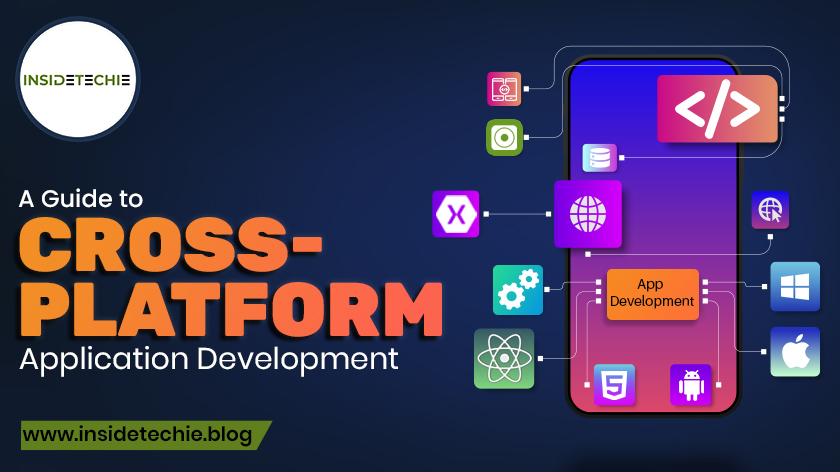Mobile app development is in itself an excruciating journey for enterprises. This article aims to reduce the pain and help entrepreneurs understand the cross-platform app development process.
In today’s highly disruptive and Darwinian mobile app development world, businesses wouldn’t risk losing their presence on either the Google Play Store or the Apple App Store. And budgeting is usually an issue if businesses go for native apps.
This is why cross-platform app development has emerged as the unrivaled choice for businesses aiming for a presence on Android and iOS.
What is cross-platform app development?
With mobile apps now becoming a critical part of businesses, it’s important that you understand the intricacies of developing an app. Cross-platform mobile development is the development of software applications that work with several mobile operating systems.
Regarding cross-platform apps, developers can share some or even all of the source code. This means that developers can build and deploy mobile assets that work on Android and iOS without recording them for each platform.
Why is it important in 2024?
Cross-platform mobile app development lets developers develop applications that work with a single codebase, which, in turn, reduces development costs. It also helps reach a broader audience for your app. Cross-platform mobile app development offers a consistent user experience across different platforms, making maintenance and updates more effortless.Cross-platform application development refers to creating software that can run on multiple operating systems or platforms, like Windows, macOS, iOS, Android.
| Parameter | Native Apps | Cross Platform Apps |
| Cost | High cost of development | Relatively low cost of development |
| Code Usability | Works for a single platform | Single code can be used on multiple platforms for an easy portability |
| Device Access | Platform SDK ensures access to device’s API without any hindrance | No assured access to all device APIs |
| UI Consistency | Consistent with the UI components of the device | Limited consistency with the UI components of the device |
| Performance | Seamless performance, given the app is developed for the device’s OS | High on performance, but lags and hardware compatibility issues are not uncommon |
Cross-platform application development refers to creating software that can run on multiple operating systems or platforms, like Windows, macOS, iOS, Android, etc.
Here’s a guide to help you navigate through this process:
1. Choose the Right Frameworks:
React Native: Uses JavaScript and React to build mobile apps for iOS and Android.
Flutter: Employs Dart language and offers a single codebase for iOS and Android apps with native-like performance.
Xamarin: Uses C# and .NET to build apps for iOS, Android, and Windows platforms.
Ionic: Leverages web technologies like HTML, CSS, and JavaScript to create mobile apps.
2. Understand Platform Differences:
Each platform has its design guidelines, features, and user behaviors. Ensure your app adapts to these differences for a native feel.
Consider user interactions, navigation patterns, and UI elements specific to each platform.
3. Code Structure and Architecture:
Follow best practices for code structuring and architecture to maintain a clean and scalable codebase.
Employ design patterns like MVC (Model-View-Controller), MVVM (Model-View-ViewModel), or MVP (Model-View-Presenter) for better code organization.
4. API Integration:
Use platform-specific APIs for accessing device functionalities like camera, geolocation, sensors, etc.Utilize third-party libraries or plugins for seamless integration with hardware.
5. Testing:
Automated testing is crucial. Use tools like Jest, XCTest, Appium, or Espresso for testing across platforms. Conduct thorough testing on each platform to ensure consistent functionality and user experience.
6. Performance Optimization:
Optimize your app’s performance for each platform. Different platforms might require different approaches for performance enhancements. Pay attention to factors like memory management, network calls, and UI rendering.
7. UI/UX Consistency:
Maintain a consistent user interface and experience across platforms while adhering to platform-specific design guidelines. Use adaptive layouts and components to ensure a smooth experience on different devices.
8. Deployment:
Follow platform-specific guidelines for app submission to app stores (e.g., Apple App Store, Google Play Store).
Update and maintain your app regularly to fix bugs, introduce new features, and adapt to platform changes.
9. Community Support and Documentation:
Consider frameworks with active communities for better support, resources, and updates. Thoroughly understand the documentation provided by the chosen framework to leverage its features effectively.
10. Security Measures:
Implement secure coding practices and encryption methods to protect user data. Stay updated with security patches and best practices provided by the platforms.
Additional Tips:
Version Control: Use version control systems like Git to track changes and collaborate with teams efficiently.
Continuous Integration/Continuous Deployment (CI/CD): Automate build, test, and deployment processes for smoother workflows.
Feedback and Analytics: Integrate feedback mechanisms and analytics tools to gather insights for improvements.
Remember, the choice of framework depends on various factors like the project requirements, team expertise, and target audience. To create a successful, stable, and well-received mobile application, you need to determine which operating system—or systems—you want your application to be compatible with. Although you can use both native and cross-platform development methods for Android and iOS operating systems, make sure you consider the tools, methods, benefits, and drawbacks of each method when developing your mobile application. Regular updates and staying informed about platform changes are crucial for maintaining a successful cross-platform application.

